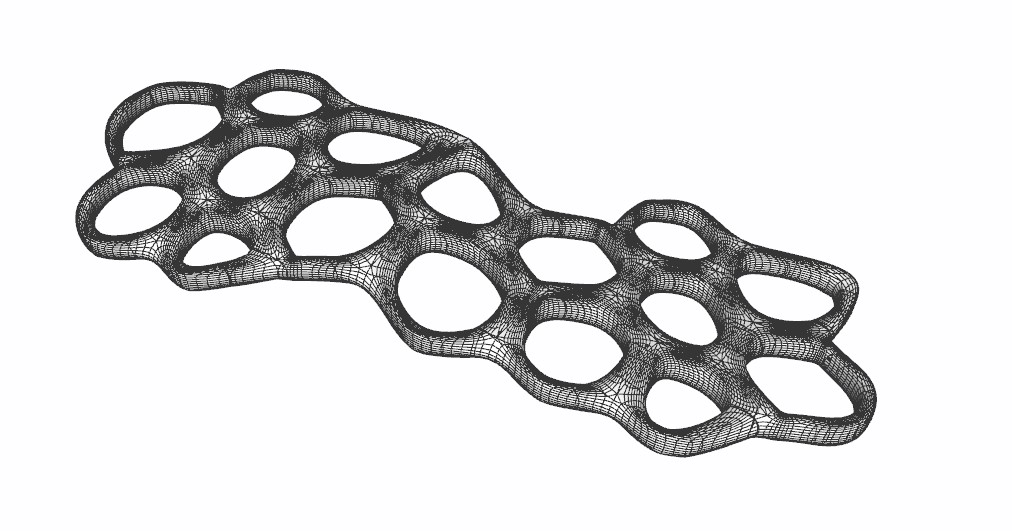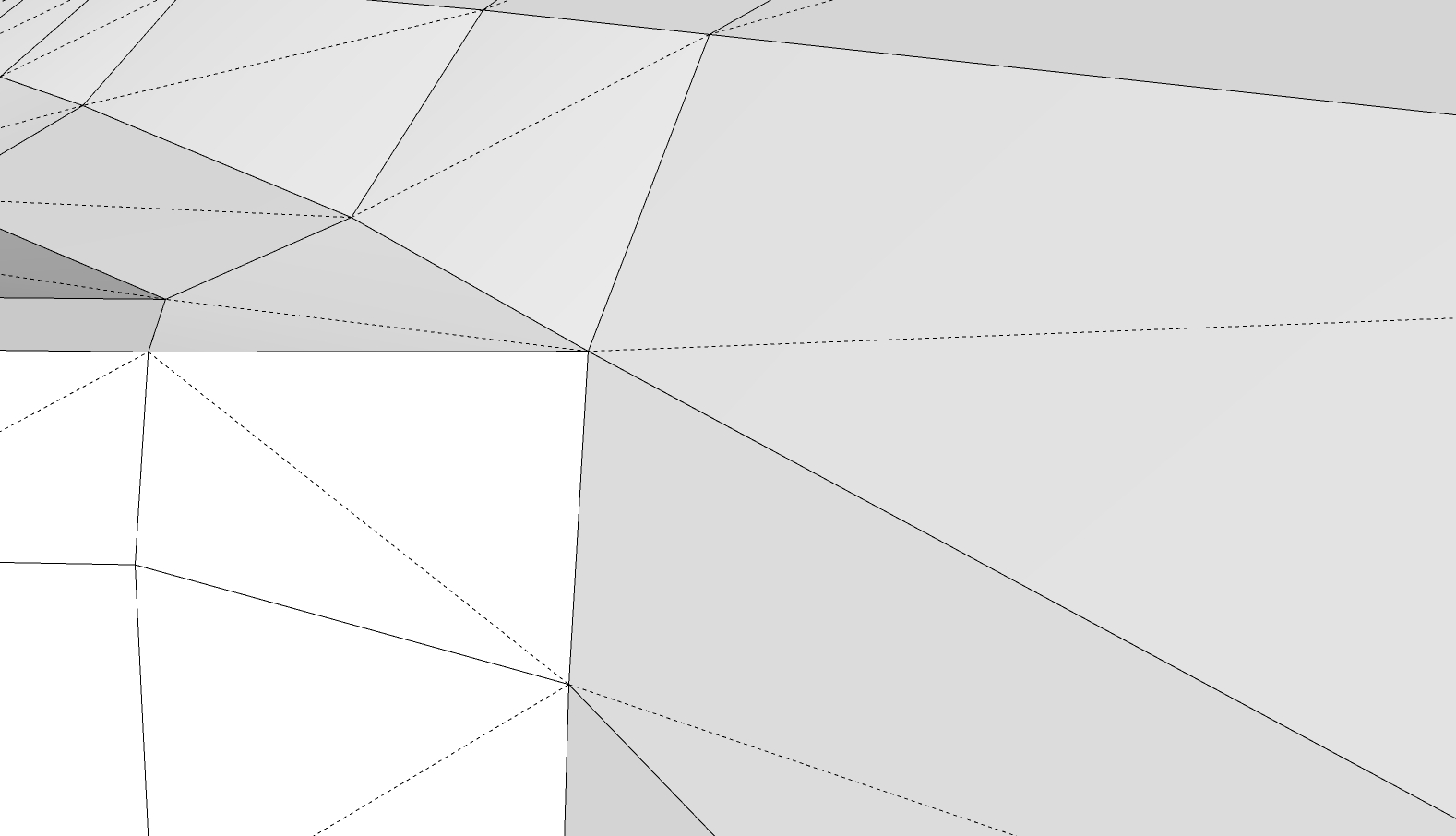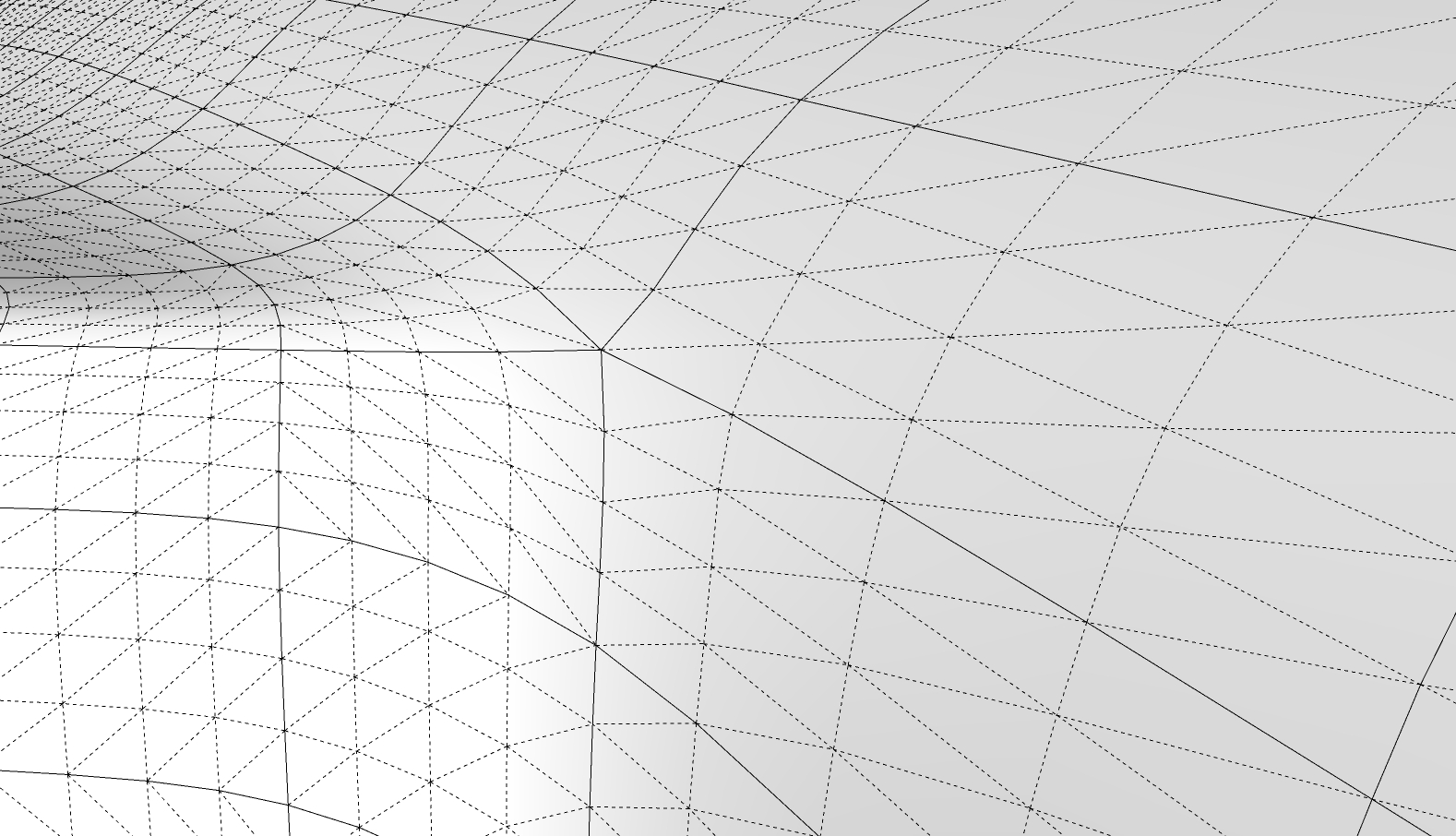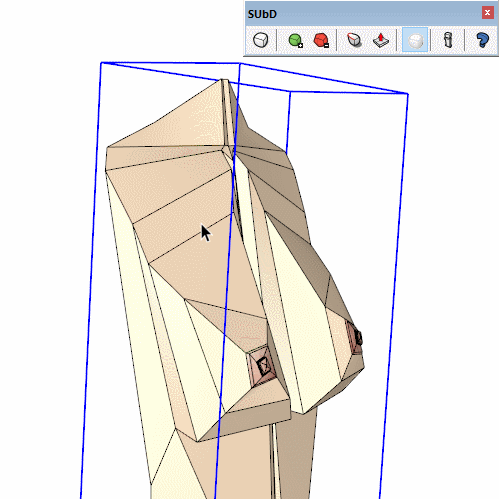SubD examples and models
-
@box said:
Looks like you have internal faces.
And I noticed that the "i" button hides some settings too... I am getting there...
I`ve seen a few of your renders and as many people before, I would like to ask you, which render are you using....Just found it in the thread... "It is Brighter 3D done in about a minute with two su materials and lighting from the Sketchucation HDRI Studio Pack."
Thank you.
-
@panixia said:
once you catch the basic trick, every plugin you are confortable with can be useful in the process..
(still missing a quad version of jointpushpull or any other very needed proper quad-shell IMHO)here is point tools + voronoi + split tools + vertex tools + sub-d + beziere surface + flowify
This was a very nice, quick, and easy exercise...only missing the render - not quite started that topic yet.... I really enjoyed it.
A few years behind, but hopefully I will get there.
BTW
Are SubD2, Vertex2 very different from the first version?

-
@thomthom said:
@jql said:
It would be cool to have render engines integrated in the workflow maybe Tomasz could be interested and I'll poke him!
There are talks going on with various render engines to allow for them to render high-poly variants from the low-polys.
Is there such thing no?
What render engine suits SketchUp quad best nowadays?
I just started to write a list with real-time integrated engines, extensions for SketchUp. The number is overwhelmingly high. Could some, please, give me a short intro to which one to use for a quick and painless render for a beginner?
I used Artlantis 15 years ago. I see lots of people using V-ray. I know Twinmotion and Lumion - not really what I am after, although both are very cool. Small space or object rendering, with a focus on the material. Is it possible to set up virtual studio in SketchUp, for example with lighting and camera and just pop in the main object and make the render quicker this way?
Sorry that I am posting this in the Quad thread, but as I am going through the posts, the idea came up.
-
@thomthom said:
@ely862me said:
In the futures, if possible, Thomas would you add more geometry along the lines Crease is activated ?
I'm in the progress of implementing OpenSubdiv. It does has something called adaptive subdivision - that might do what you want. But I suspect it will be at the expense of live creasing (or any live editing of the subdivided mesh). So one would have to choose if you want uniform subd that us denser but allow tweaking of the subdivided results, or adaptive for optimal polycount.
Is SubD2 have any of these feauters?
-
@kimga said:
What render engine suits SketchUp quad best nowadays?
None I know of provide support for SUbD. That is if you means rendering the final mesh while displaying only the proxy in SketchUp.
But if you mean support for final mesh only then all engines should support it as it is only mesh data.
As for the best render engine, that's impossible to answer. People get both astonishing and abysmal results with the same engine. It's ability and familiarity that tends to lend to good renders regardless of preference.
I would say use Blender Cycles/EEVEE as a starting point. SketchUp has good interoperability via Collada file format.
Or via OBJ if you go from Blender to SketchUp. QuadFace Tools has a BlenderOBJ Quads importer that I find very capable.
Plus Blender is free and Open Source so there's no hit on your wallet/purse etc.
-
@rich o brien said:
@kimga said:
What render engine suits SketchUp quad best nowadays?
None I know of provide support for SUbD. That is if you means rendering the final mesh while displaying only the proxy in SketchUp.
But if you mean support for final mesh only then all engines should support it as it is only mesh data.
As for the best render engine, that's impossible to answer. People get both astonishing and abysmal results with the same engine. It's ability and familiarity that tends to lend to good renders regardless of preference.
I would say use Blender Cycles/EEVEE as a starting point. SketchUp has good interoperability via Collada file format.
Or via OBJ if you go from Blender to SketchUp. QuadFace Tools has a BlenderOBJ Quads importer that I find very capable.
Plus Blender is free and Open Source so there's no hit on your wallet/purse etc.
Thank you Rich,
Blender is on my list but was looking for real-time rendering - to eliminate the import-export time. Preferably a free extension....But I will give it a go. I am working on a lantern (very basic, but aged and batted, so would be good something that could handle glow and nice texture.) I guess it is better to show ageing at rendering level rather than modify the mesh every time...
-
@kimga said:
Is it possible to set up virtual studio in SketchUp, for example with lighting and camera and just pop in the main object and make the render quicker this way?
Programs like Twilight and Thea work within SketchUp, so it is an advantage in that way. You place lighting objects (provided by the renderer) in SketchUp and run the render. You can model studios and / or use image based lighting for your studio lighting and reflections. I like working this way as can work on the model over time and it's ready to render based on the scenes and settings that I have already developed, no export necessary. Blender is amazing though--it somehow does much more in terms of realtime / fast rendering on my limited system than these plugin renderers can. I suspect it helps in more advanced work, but I've not learned to use it efficiently yet.
-
@kimga said:
I guess it is better to show ageing at rendering level rather than modify the mesh every time...
Never underestimate the info you can pull from a model. Substance Painter is a good example of baking out various maps that feed their material layering system.
Things like curvature, AO and position maps can transform materials when used correctly. But this is higher level stuff. SketchUp at it core is generating mesh data and that is all you need in modern PBR workflows.
Realtime rendering, the likes of Lumion/Twinmotion are, tend to focus on ArchViz arena so their systems are optimized for those types of models. Whereas physically accurate render engines like TwiLight are suited to every scenario.
I think based on price and features TwiLight is probably the better choice for integrated rendering with SketchUp. Thea is a more professional tool with a less approachable workflow.
Horses for courses...there's no magic bullet.
-
Hi guys,
Long time no see!How would one make a better/prettier transition here.
When rendering, seems ok but I would like to have it a bit more cursive. I believe I should add another loop to the front and one near the intersection.Edit- I got it a little bit better but I am a bit unhappy with the smaller rings that will disrupt the flow a bit.




-
The problem is the pole happening on the prominent contour...

..I would refactor the geometry in this area so the RED edges are gone and the pole is pushed away [along BLUE] to a flatter area where pinching is less noticeable...

-
Like so....

-
I agree with Rich, and if you need to tighten curving you will have an easy flow for new loops.
-
@box said:
Thomthom it's all your fault, I wander off to the pub with my tablet, I drink beer, I chat, I drink more beer, I doodle, I roughly render a few bits and pieces, I stagger home. While tucked up in bed 'she who must be obeyed' flicks through my doodles and now insists I must produce this hip bath in real life for her.
A two beer doodle and a grainy render will drive me nuts for months.I wish I could render something like this in the PUB... I am after an easy to use SOFTWARE, still looking for ideas as I am haven`t yet downloaded any. I am a bit scared of the learning curve as well as I want to make sure it will be worth the time and effort.
-
Twilight Hobby is free and relatively easy to learn. It also has a good forum.
As for time and effort, that is down to you. -
@thomthom said:
@rv1974 said:
General question:
Would this plugin or any other have any benefits (speed, reliability etc.) being part SU core code (and not as add-on)?This plugins would have a benefit to API access to the viewport pipeline - as then the subdivided mesh could be sent directly to the OpenGL pipeline instead of having to regenerate SketchUp faces. Then SU would know only about the control mesh and any tool could be used to manipulate the mesh while seeing the subdivided result.
Though I have some ideas for that which might make it less of an issue.(I feel we should be having a separate thread for all of this and keep this thread about example models. Can a mod split out the recent posts?)
Sorry to keep coming back to this, but as we are 5 years later, I wonder if using SubD will have an implication on which Render engine to choose to use/learn or this problem is now handled in SU 2021? (I use 2018 at the moment).
In other words. Would quad face modelling be the way to go forward with SU to design small (furniture), but sometimes larger (spaceship, organic building) items? I haven't yet tried newer versions of SU (after 2018 - as I like the fact that you can own it) I wonder if a newer version would handle better a complex geometry?
Am I right that SU only uses one core? Just as ArchiCAD? I choose this new computer looking at single-core performance for this particular reason, but it doesn't seem to improve either of the above-mentioned software`s performances (although I use quite an old version in both cases).
I wonder if choosing the rendering engine wisely (OPEN GL - whatever this means) would solve my problems with slow/too big models - apart from the obvious solution to use PROXIES or other modelling methods to reduce the number of POLYGONS.
-
@unknownuser said:
I wonder if using SubD will have an implication on which Render engine to choose to use/learn or this problem is now handled in SU 2021?
Not really. You will need to export the hi-poly mesh to a render engine as I know of no Render App that supports SUbD Proxy meshes at render time. That said, OBJ export via QFT is a file format widely supported.
@unknownuser said:
Would quad face modelling be the way to go forward with SU to design small (furniture), but sometimes larger (spaceship, organic building) items?
Yes, QF is the best way to get higher fidelity meshes. But you need to bake the mesh data into the model to render it. Or, as above, export the proxy to OBJ so you can leverage subdivision in other apps.
@unknownuser said:
I wonder if a newer version would handle better a complex geometry?
Probably, new releases offer better performance in general. A 4 year old version just introduces more incompatibility for you going forward. If you support the app then paying the devs, via a license, for their continuous improvements is part of helping the app to get better over time. Not only that you're keeping nice peeps in jobs and helping the extension ecosystem to continue to grow.
@unknownuser said:
I wonder if choosing the rendering engine wisely (OPEN GL - whatever this means) would solve my problems with slow/too big models - apart from the obvious solution to use PROXIES or other modelling methods to reduce the number of POLYGONS.
SketchUp is not geared towards hi-poly meshes. It's a conceptual drafting tool to rapidly design and present ideas. Extensions/Plugins have added abilities to SketchUp it doesn't have out of the box. This support comes with limitations. Same can be said for many other apps. 3DS Max can't do what SketchUp does.
You're bound run into many roadblocks not matter what path you chose.
But break your problem into smaller parts and you should have no issue.
-
@unknownuser said:
I am after an easy to use SOFTWARE
The more easy is the SimLab Composer Lite!
 ( free 1920 * 800 or 1920 *1040 if you take an old version)
( free 1920 * 800 or 1920 *1040 if you take an old version)
(don't load the "try version" if you want the "free" version )
)ELse the free more exiting TwinMotion Free in 2 K for personal use !

@unknownuser said:
The Twinmotion trial is freely available for anyone to use for an unlimited period of time for testing the product; it may not be used for commercial purposes. The trial includes the full features of Twinmotion, with the exception of exports being limited to a 2K resolution.

-
An excellent response Rich.
Can we shift back to the point of the thread now.
Making smooth curves from low poly structures.

-
@pilou said:
@unknownuser said:
I am after an easy to use SOFTWARE
The more easy is the SimLab Composer Lite!
 ( free 1920 * 800 or 1920 *1040 if you take an old version)
( free 1920 * 800 or 1920 *1040 if you take an old version)
(don't load the "try version" if you want the "free" version )
)ELse the free more exiting TwinMotion Free in 2 K for personal use !

@unknownuser said:
The Twinmotion trial is freely available for anyone to use for an unlimited period of time for testing the product; it may not be used for commercial purposes. The trial includes the full features of Twinmotion, with the exception of exports being limited to a 2K resolution.

I tried TwinMotion before as it comes free with ArchiCAD as well as it was free in 2019 to download. It is fun, but I struggled with the background. Sometimes it is good to put the building in context - in an architectural project that would be a different scenario in each case. It`s very time consuming to model that up too. I prefer Lumion - unfortunately it is way too expensive.
I am now after a studio photo type render when the object is in the centre and the background is black and it lit to show the properties of the materials (in case of furniture) or the plasticity of the building (in case of a building on a context)...
-
@box said:
An excellent response Rich.
Can we shift back to the point of the thread now.
Making smooth curves from low poly structures.I am going through the whole thread, I've just seen this not long ago.
And thanks for the GIFs Box. They are a very good way to communicate how quad works.
Advertisement







